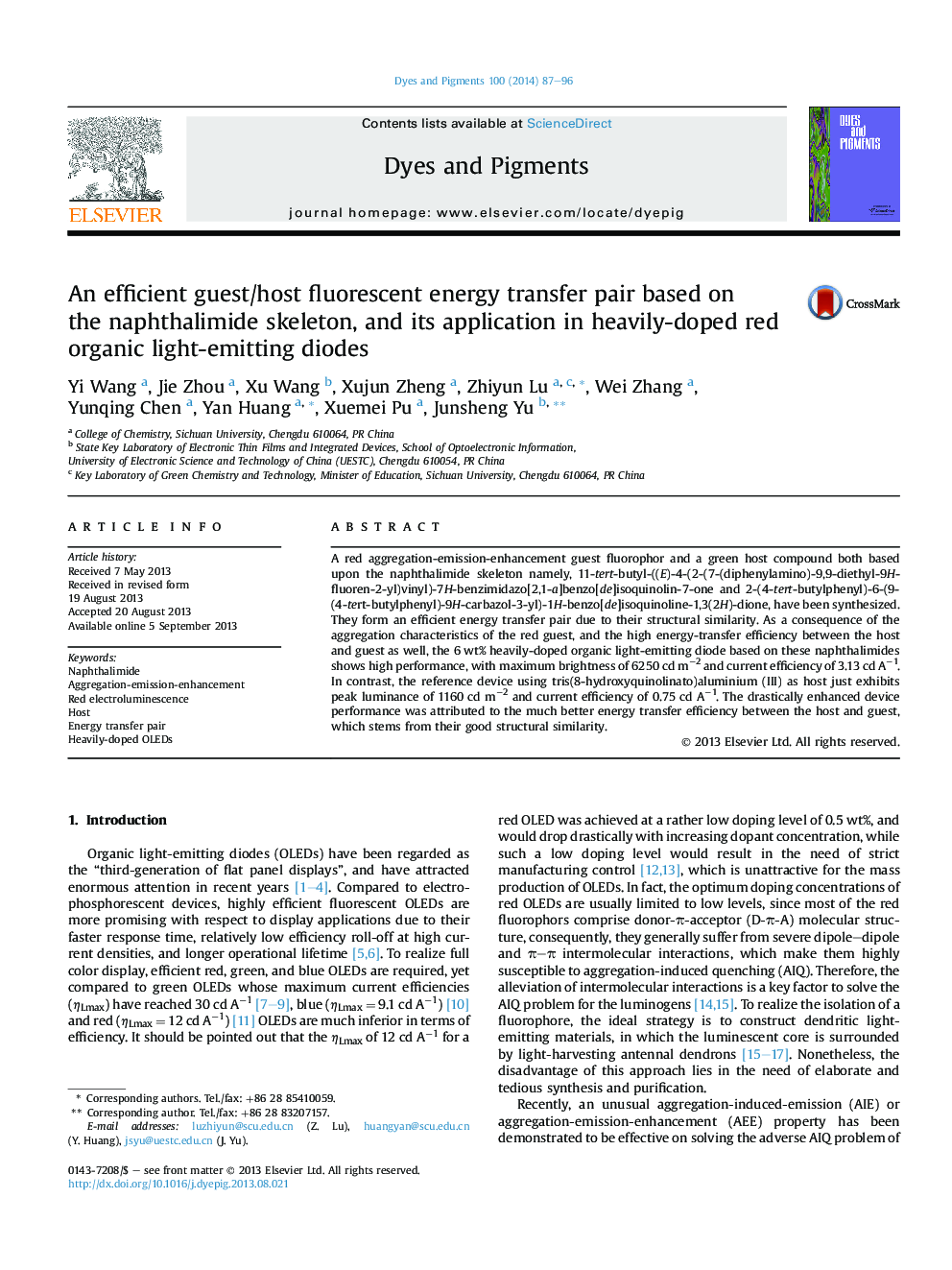| Article ID | Journal | Published Year | Pages | File Type |
|---|---|---|---|---|
| 176307 | Dyes and Pigments | 2014 | 10 Pages |
•A aggregation-emission-enhancement red naphthalimide and a green one have been synthesized.•These two naphthalimides form an efficient energy transfer pair due to their good structural similarity.•High performance heavily-doped organic light-emitting diode based on this host/guest pair has been achieved.
A red aggregation-emission-enhancement guest fluorophor and a green host compound both based upon the naphthalimide skeleton namely, 11-tert-butyl-((E)-4-(2-(7-(diphenylamino)-9,9-diethyl-9H-fluoren-2-yl)vinyl)-7H-benzimidazo[2,1-a]benzo[de]isoquinolin-7-one and 2-(4-tert-butylphenyl)-6-(9-(4-tert-butylphenyl)-9H-carbazol-3-yl)-1H-benzo[de]isoquinoline-1,3(2H)-dione, have been synthesized. They form an efficient energy transfer pair due to their structural similarity. As a consequence of the aggregation characteristics of the red guest, and the high energy-transfer efficiency between the host and guest as well, the 6 wt% heavily-doped organic light-emitting diode based on these naphthalimides shows high performance, with maximum brightness of 6250 cd m−2 and current efficiency of 3.13 cd A−1. In contrast, the reference device using tris(8-hydroxyquinolinato)aluminium (III) as host just exhibits peak luminance of 1160 cd m−2 and current efficiency of 0.75 cd A−1. The drastically enhanced device performance was attributed to the much better energy transfer efficiency between the host and guest, which stems from their good structural similarity.
